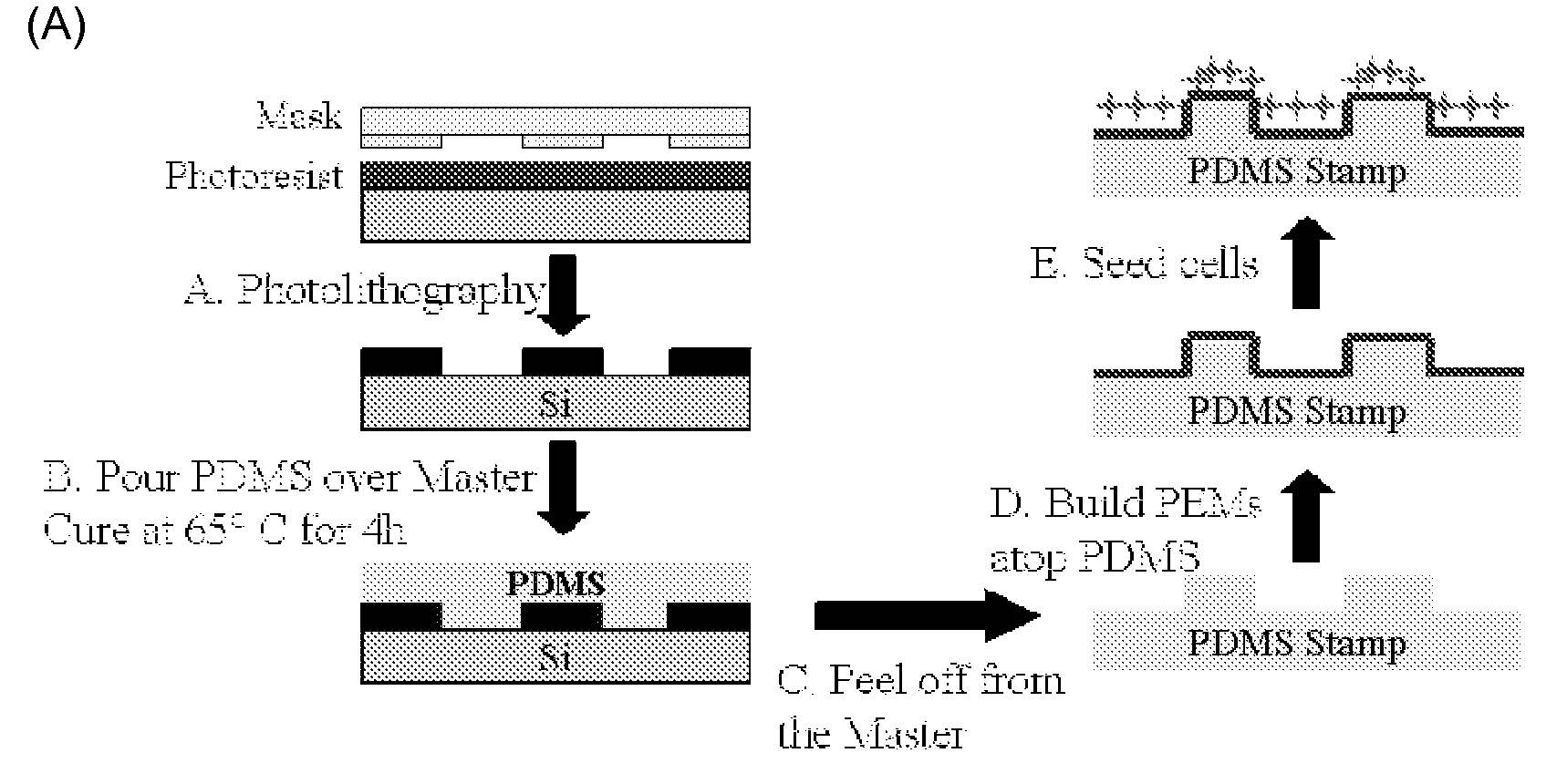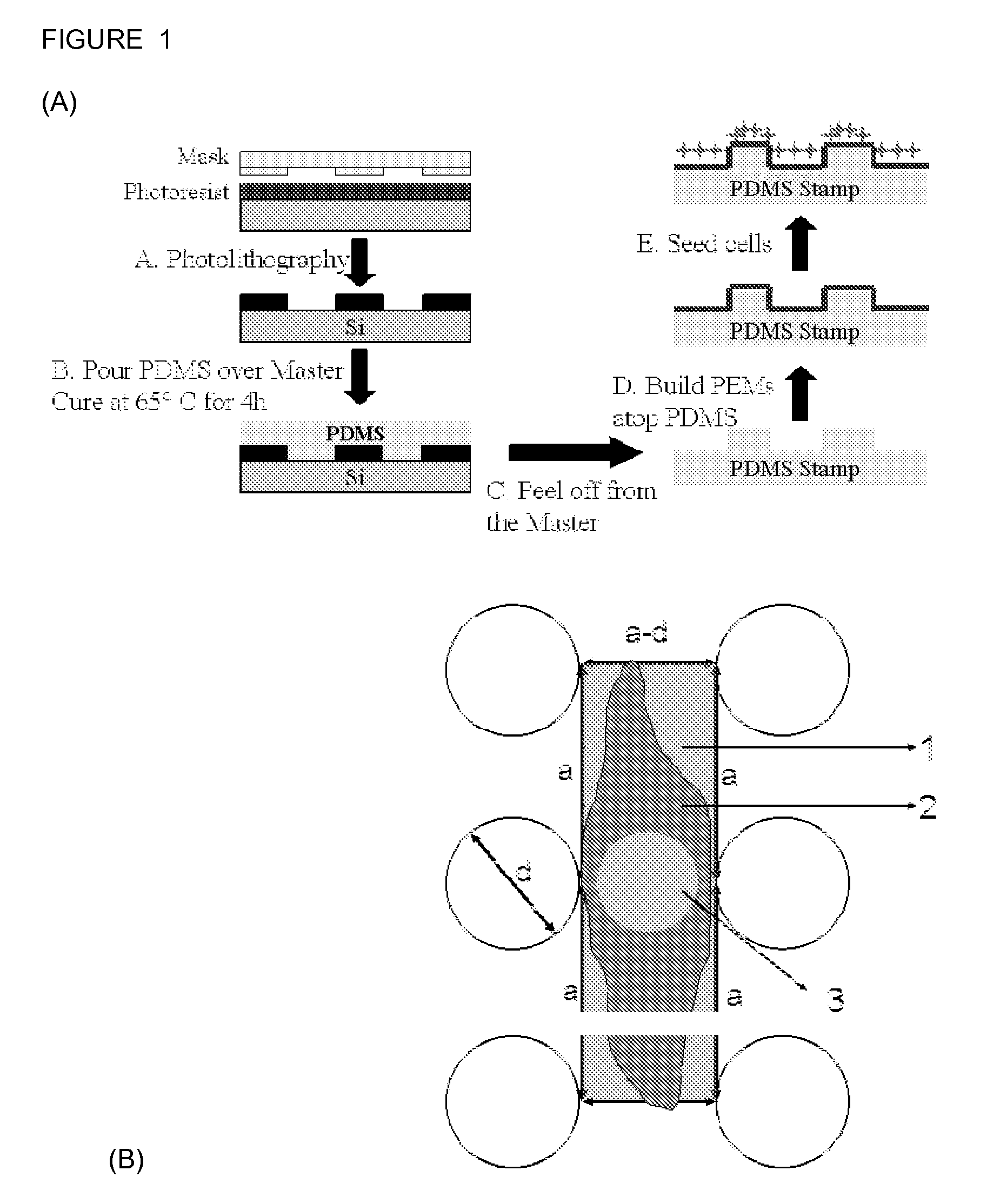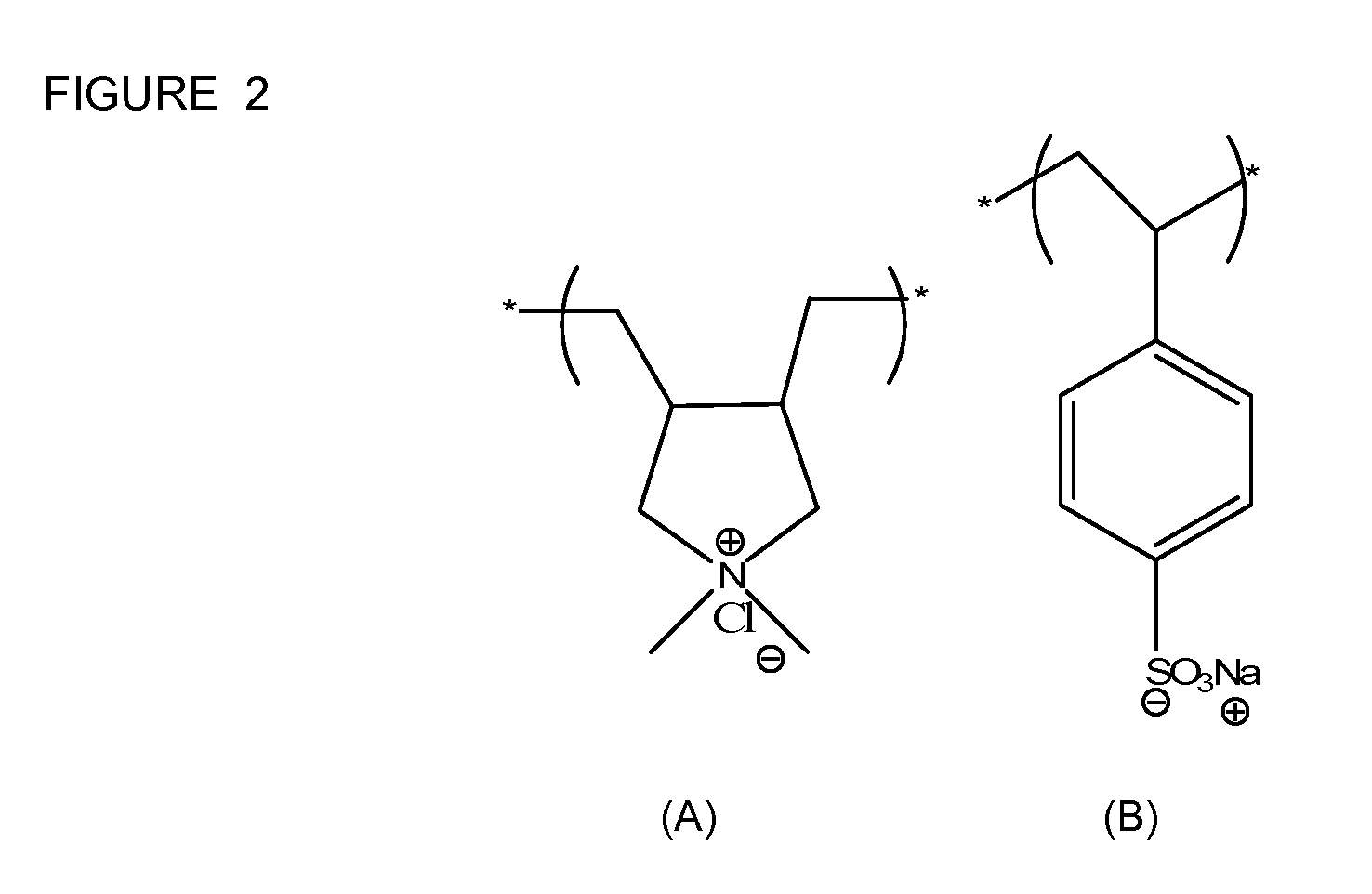Cell adhesion on surfaces of varying topographies
a topography and cell technology, applied in the field of cell adhesion on surfaces with varying topographies, can solve the problems of low permeability to water, low electrical conductivity, and less study of the effect of surface topographical features on cell growth, and achieve the effect of “pitch” of the surfa
- Summary
- Abstract
- Description
- Claims
- Application Information
AI Technical Summary
Benefits of technology
Problems solved by technology
Method used
Image
Examples
examples
1. Materials
[0049]Poly(diallyldimethylammonium chloride) (PDAC) (Mw˜100,000-200,000) as a 20 wt % solution, sulfonated poly(styrene), sodium salt (SPS) (Mw˜70,000), fluorosilanes and sodium chloride were purchased from Aldrich (Milwaukee, Wis.). Poly(dimethylsiloxane) (PDMS) from the Sylgard 184 silicone elastomer kit (Dow Corning, Midland, Mich.) was used as substrates with varying topographies. The PDMS stamps were used for microcontact printing.45 Dulbecco's Modified Eagle Medium (DMEM) with 4.5 g / l glucose, 10× DMEM, fetal bovine serum (FBS), penicillin and streptomycin were purchased from Life Technologies (Gaithersburg, Md.). Insulin and glucagon were purchased from Eli Lilly and Co. (Indianapolis, Ind.), epidermal growth factor from Sigma Chemical (St. Louis, Mo.). Adult female Sprague-Dawley rats were obtained from Charles River Laboratories (Boston, Mass.). Actin cytoskeleton and focal adhesion staining kit was purchased from Chemicon (Temecula, Calif.).
2. Preparation of PD...
PUM
| Property | Measurement | Unit |
|---|---|---|
| interfeature distance | aaaaa | aaaaa |
| surface area | aaaaa | aaaaa |
| height | aaaaa | aaaaa |
Abstract
Description
Claims
Application Information
 Login to View More
Login to View More - R&D
- Intellectual Property
- Life Sciences
- Materials
- Tech Scout
- Unparalleled Data Quality
- Higher Quality Content
- 60% Fewer Hallucinations
Browse by: Latest US Patents, China's latest patents, Technical Efficacy Thesaurus, Application Domain, Technology Topic, Popular Technical Reports.
© 2025 PatSnap. All rights reserved.Legal|Privacy policy|Modern Slavery Act Transparency Statement|Sitemap|About US| Contact US: help@patsnap.com



